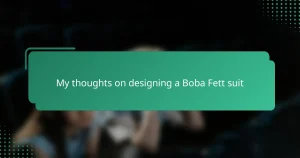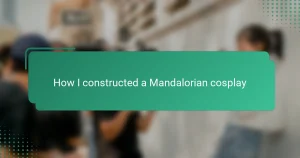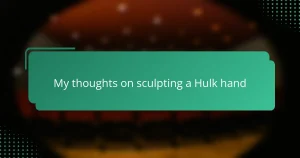Key takeaways
- Science fiction props require meticulous attention to detail, transforming them into essential storytelling elements.
- The choice of materials, like EVA foam and thermoplastics, greatly impacts the realism and functionality of the props.
- A well-equipped toolkit, including rotary tools and heat guns, is crucial for effectively shaping and assembling the armor.
- The painting and weathering processes add depth and character to the final piece, enhancing its authenticity and visual appeal.

Understanding Science Fiction Props
When I first delved into the world of science fiction props, I was amazed by how these objects blur the line between imagination and reality. Have you ever wondered what makes a prop truly believable? For me, it’s the meticulous attention to detail that breathes life into a fictional universe.
Science fiction props are more than just visual elements; they carry the story’s essence and character. I remember crafting pieces that had to feel functional, as if they held secrets or hidden technology. This emotional connection to the prop transforms it from a mere object into a vital part of storytelling.
What fascinates me most is how props invite us to suspend disbelief. They challenge our creativity and technical skills, pushing us to invent gadgets that never existed but feel entirely plausible. Isn’t that the magic of science fiction—making the impossible seem tangible?
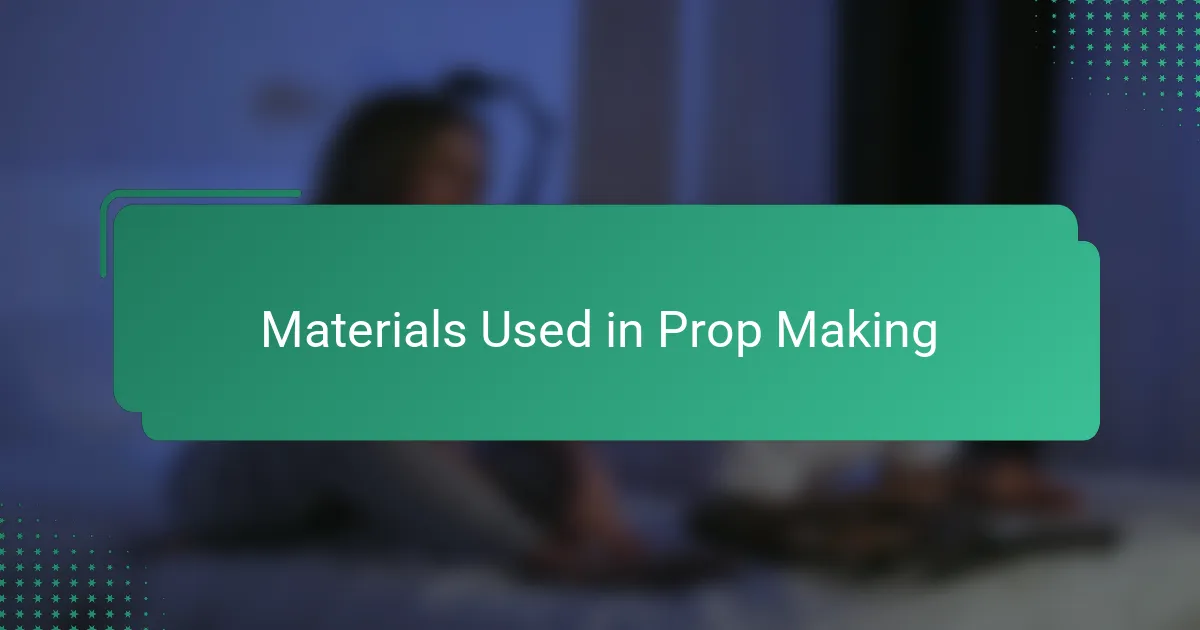
Materials Used in Prop Making
When I began selecting materials for the Iron Man armor prop, I quickly realized that choosing the right substance was as much about practicality as it was about aesthetics. Foam, especially EVA foam, became my go-to because it’s lightweight and easy to shape, yet sturdy enough to hold intricate details. Have you ever worked with something that feels almost alive as you mold it? Foam gave me that sensation—it was like sculpting a futuristic metal shell without the weight.
Another material I heavily relied on was thermoplastics, like Worbla. From my experience, nothing matches the versatility of Worbla for creating smooth, rigid surfaces that mimic real armor plates. Heating and molding it felt like wielding actual armor-crafting tools, which deepened my connection to the character I was bringing to life. The way it hardens into a durable finish is incredibly satisfying—it’s like watching a concept become reality under your fingertips.
I also experimented with metallic paints and weathering powders to add realism, ensuring the armor didn’t look like a plastic shell but rather a battle-worn suit. Applying those finishing touches is where the magic happens—I felt like a genuine prop artisan, transforming simple materials into a believable piece of sci-fi history. Isn’t that what drives us all as prop makers? The challenge of turning raw materials into something extraordinary.
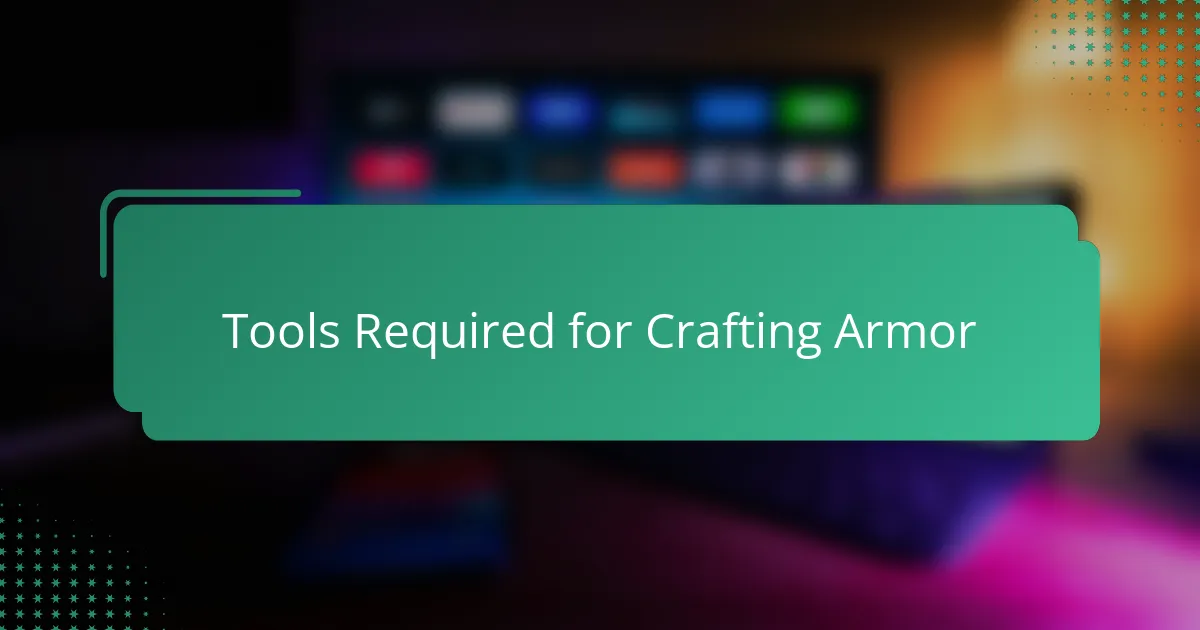
Tools Required for Crafting Armor
Crafting the Iron Man armor demanded more than just materials—it required a carefully chosen toolkit that could bring my vision to life. For instance, my trusty rotary tool became an extension of my hand, allowing me to carve, sand, and detail foam with precision. Have you ever held a tool that feels like it understands your creative intent? That’s exactly how I felt wielding it during those long hours.
Beyond just shaping, I needed heat guns to soften and mold thermoplastics like Worbla. Watching the material become pliable under the warmth always gave me a sense of control, as if I were forging something real. It’s fascinating how the right temperature can transform a rigid sheet into a curved armor piece that fits like a second skin.
Of course, no armor project would be complete without a solid grounding in basic hand tools—scissors, brushes, and clamps all played their part. I learned that having these simple tools within reach saved me from countless frustrations. Does anyone else find comfort in the familiarity of these everyday helpers during complex builds? For me, they were the quiet heroes behind the scenes.
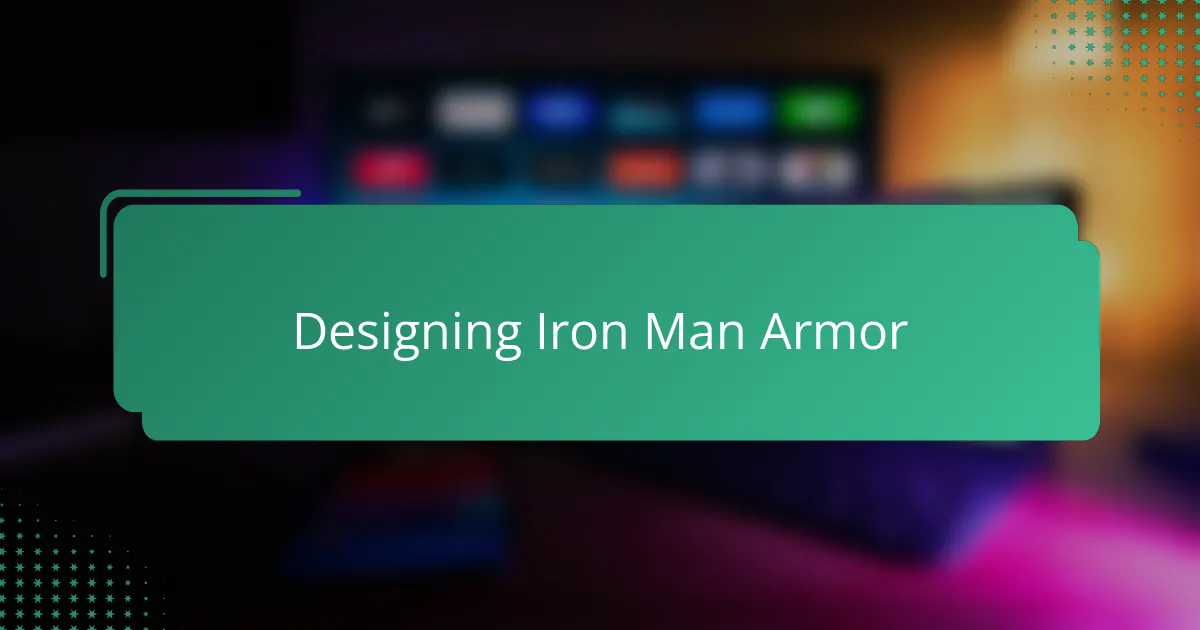
Designing Iron Man Armor
Designing Iron Man armor was like stepping into Tony Stark’s shoes, at least in my mind. I had to think beyond the surface—how would this suit function if it were real? Balancing bulk with mobility wasn’t easy; I often paused to consider how each piece would move or protect, imagining myself inside that high-tech shell.
One challenge I never expected was matching the iconic silhouette while incorporating realistic joint articulation. I spent hours sketching and tweaking, trying to capture that perfect marriage of sleek design and mechanical complexity. Have you ever been caught between making something look cool and making it believable? That tension fueled much of my creative process.
Colors and lighting weren’t just aesthetic choices either—they had to hint at advanced tech beneath the surface. I experimented with layers of paint and subtle LED placements, striving to evoke the armor’s inner power without overshadowing the craftsmanship. It felt like revealing a glimpse of Tony’s genius through every glowing panel.
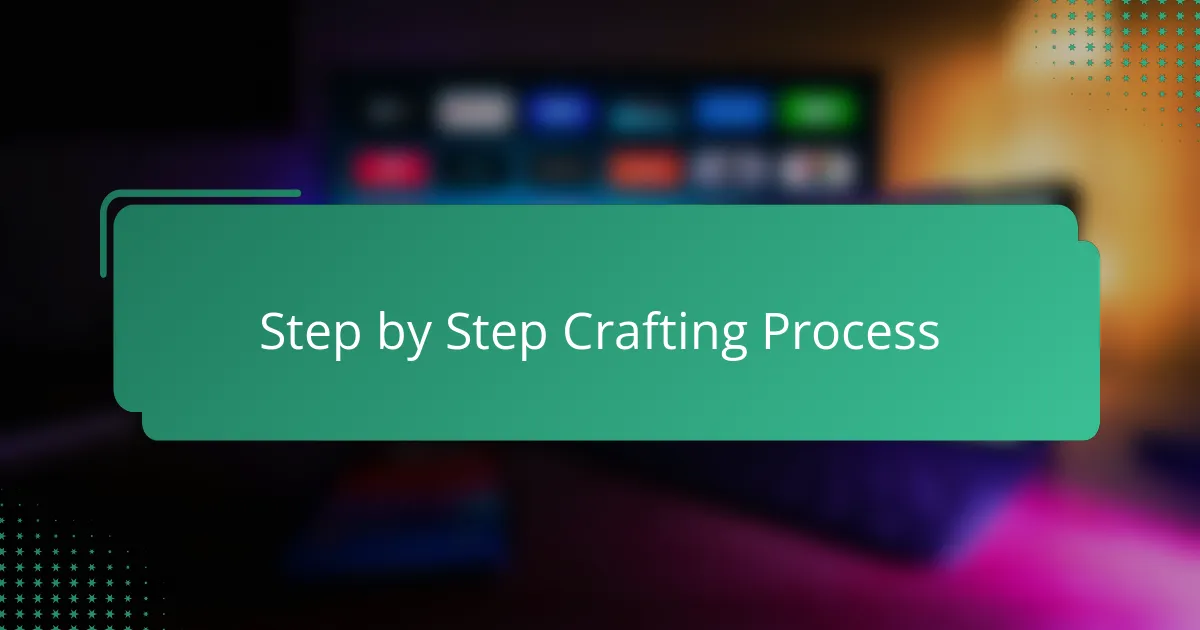
Step by Step Crafting Process
Starting the crafting process, I broke down the armor into manageable sections, tackling the helmet first. This approach helped me focus on mastering small details before assembling the whole suit. Have you ever felt that sense of accomplishment after finishing a tricky part early on? It really set the tone for building the rest of the armor.
Cutting and shaping each piece required patience and precision. I remember spending hours sanding edges and repeatedly fitting parts to my body measurements—every adjustment made the armor feel more custom and lifelike. That hands-on interaction fueled my connection to the project; it was as if the suit was coming alive under my fingertips.
Assembly was where all the preparation paid off. Layering the foam and thermoplastics, then sealing and painting, demanded a steady hand and plenty of breaks to avoid frustration. Isn’t it fascinating how the combination of methodical steps and creative intuition results in something that feels both technical and artistic? For me, this step-by-step process was the heart of turning concept into reality.
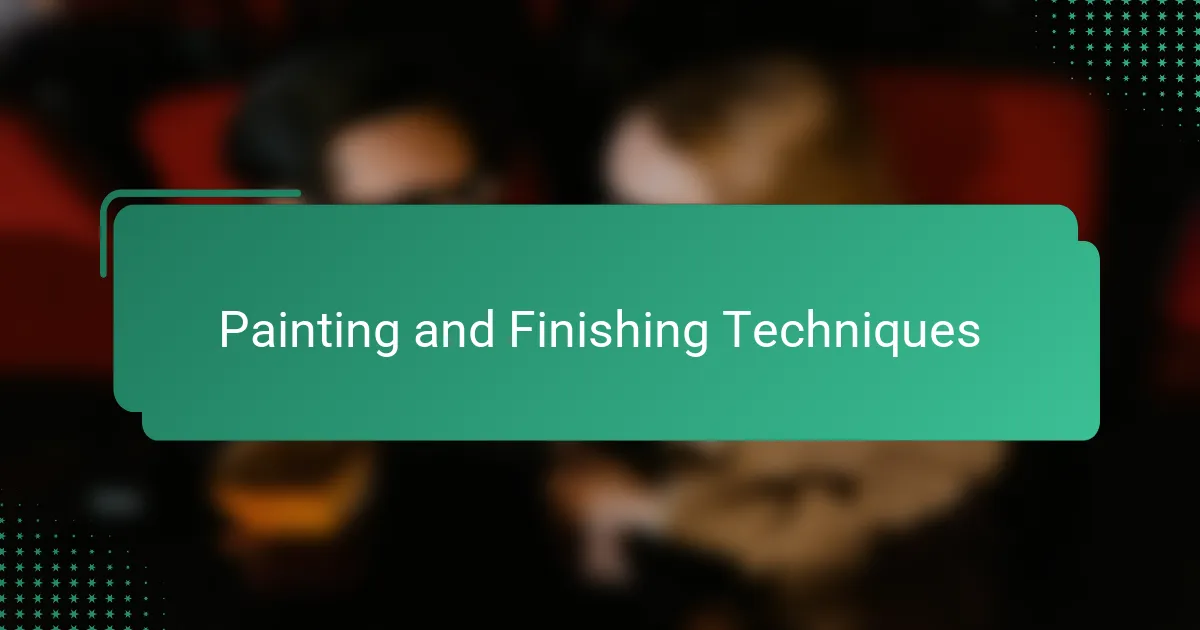
Painting and Finishing Techniques
When I got to the painting stage, I knew it wasn’t just about slapping on color; it was about capturing the armor’s signature sleekness and those subtle metallic reflections. Using multiple layers of automotive-grade paints allowed me to build depth and shimmer, which really brought that tech-inspired realism to life. Have you ever noticed how a single coat can look flat, but layering transforms it into something vivid and alive? That’s where the magic really starts.
Sealing the paint was another crucial step. I opted for a clear coat finish that not only protected the delicate paintwork but also added that polished, high-gloss look you’d expect from a suit designed by Tony Stark himself. It felt surreal, almost like I was giving the armor its final skin—ready to face battles, or at least the camera.
Weathering was my favorite finishing touch. Instead of keeping the suit pristine, I added subtle scuffs, scratches, and even faint burn marks to suggest it had seen action. To me, these imperfections told a story; they gave personality and grit, reminding me that even the most advanced armor has its scars. Don’t you think those little flaws make props feel more genuine and lived-in? I certainly do.

Personal Challenges and Solutions
Facing the challenge of balancing durability with weight was a constant hurdle. I quickly learned that making the armor sturdy enough for wear without turning it into a heavy suit required a lot of trial and error—there were moments when I doubted if the foam could really stand up to the demands. But each failure taught me something new, and adjusting the thickness and layering became my secret weapon.
Another personal obstacle was mastering the complex joint articulation to allow movement while keeping the armor’s sleek look. It felt like solving a mechanical puzzle, where every piece had to fit perfectly yet flex naturally. I found myself sketching, cutting, and reassembling parts late into the night, driven by the desire to make the suit feel alive, not just a static shell.
Sometimes frustration crept in, especially when paint or heat treatments didn’t go as planned. But I realized that stepping back and revisiting the problem with fresh eyes often revealed simple solutions I hadn’t noticed before. Have you ever experienced that moment when patience turns into breakthrough? For me, those were the happiest, most rewarding parts of the entire crafting journey.
